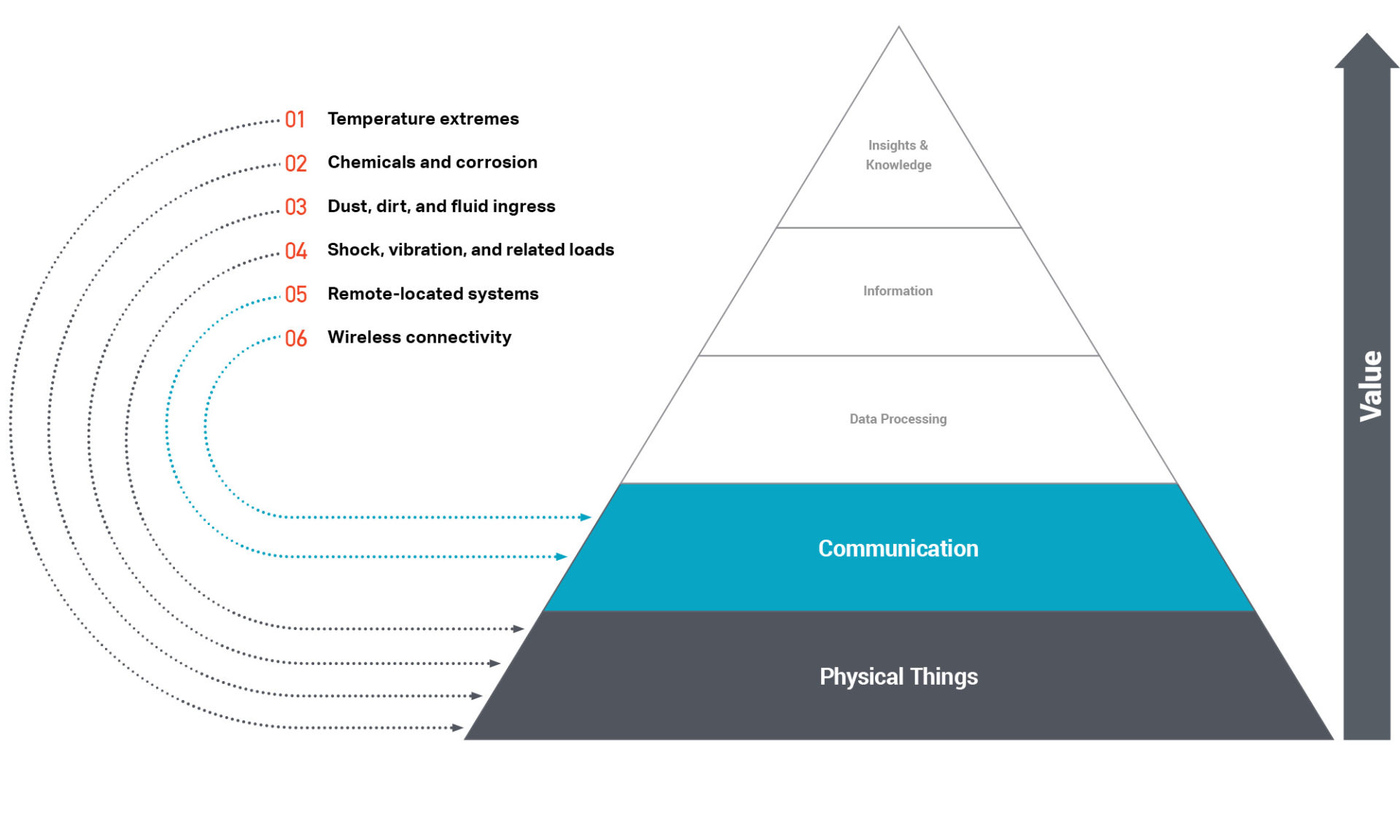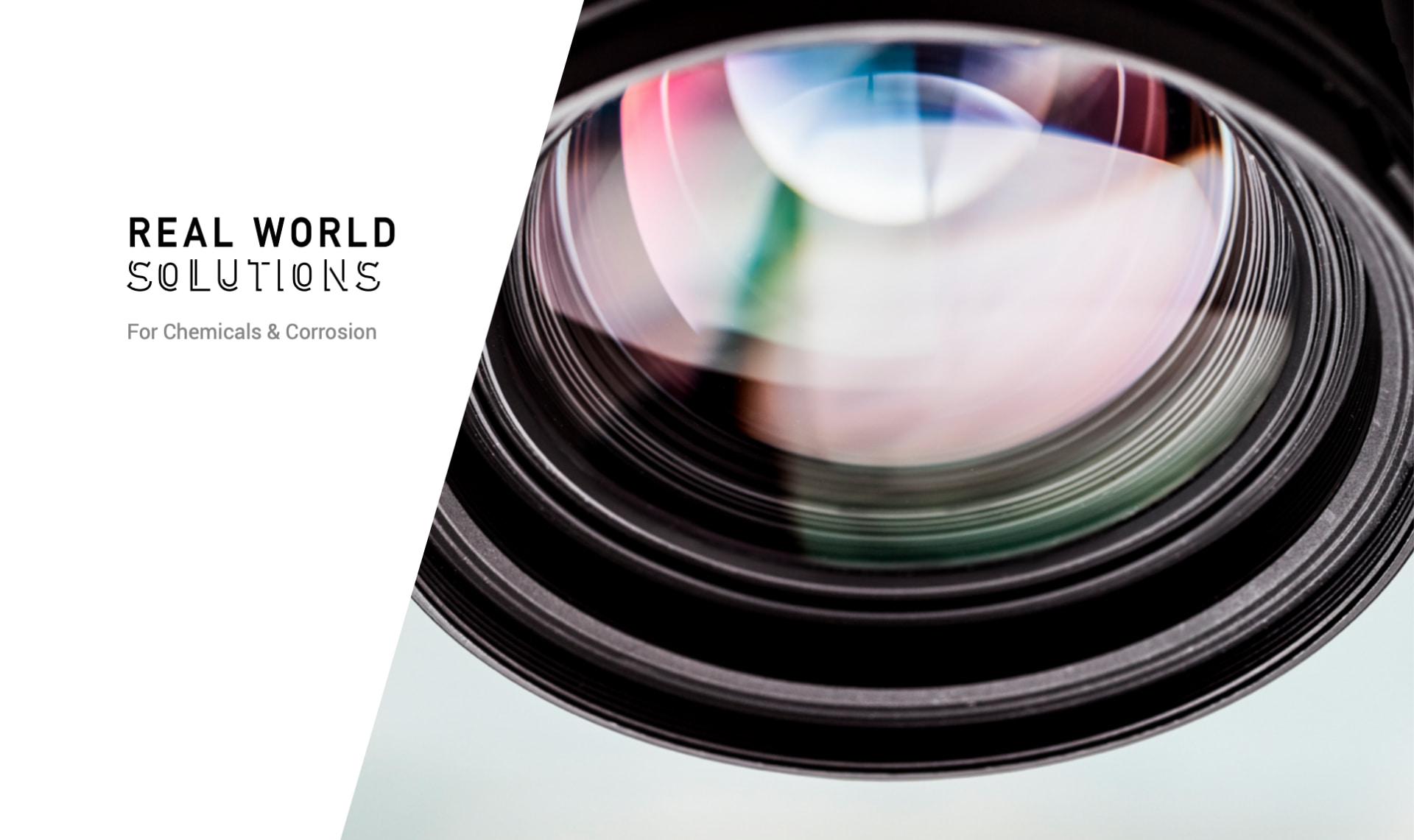Additional contributions to this series made by: Ian Graves, Bret Richmond, & Mike Schaaf

CONDITIONS
All systems are exposed to chemicals of some description, but some chemicals are more challenging to tolerate than others.
Chemical exposure can come from a number of sources: from intentional contact with a chemical process that is being monitored, through repeated exposure to cleaning chemicals, to inadvertent but foreseeable exposure to chemicals that may be on people’s hands. Exposure to the atmosphere, for example, the salt air exposure in a seaport, or the caustic dust that surrounds a concrete plant also need to be considered.
Critical to designing for chemical exposure is understanding the time, frequency, and concentration of chemicals that the system is exposed to.There is often a temperature-dependent component to the exposure as well.
Failure from chemical exposure can be observed across a range of time periods, from short-term immediate evidence of incompatibility to the slow growth of Environmental Stress Cracking (ESC) over repeated exposure.
DESIGNING FOR CHEMICAL TOLERANCE
To design for chemical tolerance, it’s critical to accurately and thoroughly characterize the chemical exposure of the system overall use cases and the lifecycle of the sensor. This allows for appropriate definition of requirements, and design of verification testing to ensure the product meets the requirements.
With the challenges well defined, appropriate design strategies can be selected and implemented:
1) Prevent Contact with Sensitive Components
Preventing contact with chemicals that can damage components is the first strategy that is implemented in most systems, using a housing or enclosure that is more chemical tolerant to protect the more sensitive components.
Sealing can become a design challenge with this strategy, ensuring that chemicals cannot inadvertently get into contact with the more sensitive components. This particular design focus will be discussed in more detail in the following section on ingress protection.
With IoT systems, there can be particular challenges with designing an enclosure that appropriately protects the more sensitive components but still allows them to effectively measure the conditions of the environment it is in. This could be through having optically clear windows to allow for optical sensors to continue to function, to accommodate for the attenuation of audio or pressure signals by the enclosure.
2) Select Materials Compatible with the Chemicals
Having ensured sensitive components that cannot be redesigned are protected from chemicals they are sensitive to, the enclosure or exposed components need to be designed to be compatible with the chemicals they will encounter. It is very important to consider the system interfaces here, often fasteners, glues, o-rings, and other connection points can lead to material compatibility failures.
Material datasheets and databases are used to select the appropriate materials for the environment. In many cases, this will be sufficient, but not all chemicals of interest are always included in the manufacturer’s datasheets, in which case arises the need to move to the following strategy
3) Test for Chemical Tolerance
The most appropriate materials for an environment can be selected using available databases, but representative testing is required to confirm the performance with specific chemicals and conditions. Success can be found by looking at the most extreme scenarios. This allows for the verification of the design inits tolerance to the chemicals and the incorporation of additional considerations, such as looking at how molded-in or applied stresses to the components can influence chemical compatibility. All potential failure modes should be tested, including environmental stress cracking which can be missed by many test protocols.

COMMERCIAL KITCHENS
In the previous blog post, we introduced adding an optical sensor (camera) to a commercial conveyor-style pizza oven to confirm pizzas had been made correctly per the order. Something to consider is that devices located in commercial kitchens would be subjected to a host of harsh chemicals used for cleaning and sterilizing surfaces. For an optical-based system, it would be important to ensure that lens surfaces had been treated with coatings for durability against these chemicals. Additionally, sealing materials would need to be chosen that were rated for use against the chemicals. The effect of elevated temperature and severe temperature cycling would need to be considered in the design of these seals as this could easily accelerate aging or degradation phenomena.

